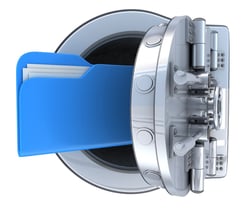 In quantity, file data (unstructured data) has been around now for roughly 50 years. Over the last 10 years, as graphic and media content moved into corporate files, most organization’s collection of file data has grown from large to massive – and it will only continue to grow… Millions of files will become billions of files. Terabytes will become petabytes.
In quantity, file data (unstructured data) has been around now for roughly 50 years. Over the last 10 years, as graphic and media content moved into corporate files, most organization’s collection of file data has grown from large to massive – and it will only continue to grow… Millions of files will become billions of files. Terabytes will become petabytes.
Since no organization has billions of employees, this means that most files are unused and will remain unused. There will come a day when active files – files that employees are currently using – will need to be separated from inactive files – files that are no longer being used.
The question becomes: What do we do with the inactive files?
Obviously, we want to put them someplace safe and secure, and someplace inexpensive, since there are lots of inactive files. (At least 80% of most organization’s files are stale and inactive.)
There are plenty of choices as to where to put inactive files, some definitely better than others. The one place you don’t want to put them is in a “ file vault”. A file vault is a proprietary system that packs all the files together and writes them to storage in a way that prevents you from looking inside at your data.
Using file vaults leaves you with several problems:
- You are forever beholden to the vault vendor because, without them, you cannot access your files (vendor lock-in)
- When you need one or several files you have to “recover” them, which means you need additional storage to hold the recovered copies and you have a time to recover (RTO) delay
- If you need to scan a subset or all of your files (you just got a subpoena from the court, for example) you can’t. Since you have no direct access to the vaulted files, you’ll need to recover anything that needs to be scanned – which may require more on-premise storage than you actually have. (It’s happened to others, it can happen to you…)
Years ago, when technology was more limited and less flexible, the vault strategy was one of the few things you could do. Today, it’s like using an expensive 20-inch glass-tube monitor when you could have a 27-inch flat screen for a quarter of the price.
Ready to improve your data storage management?







